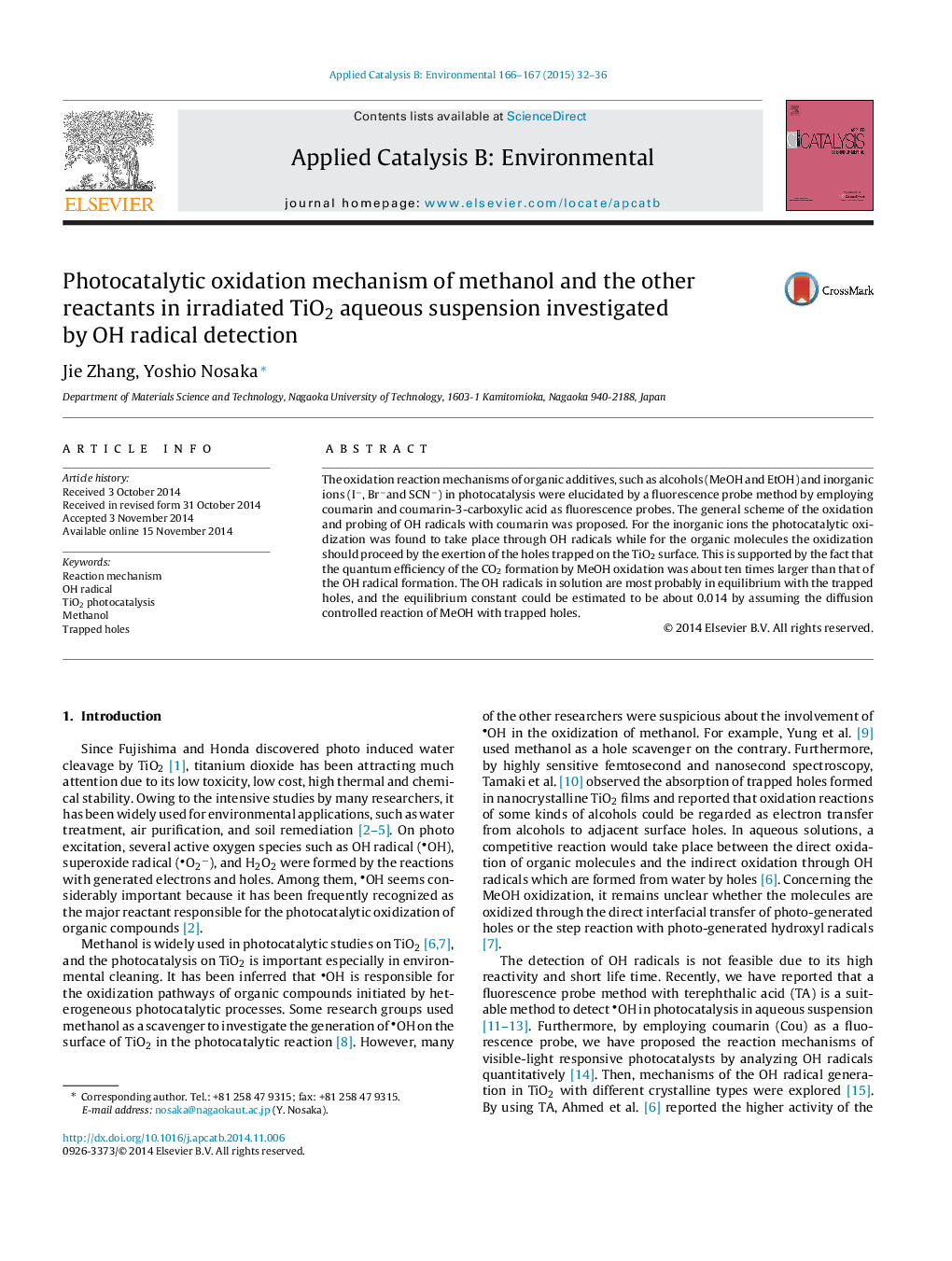| Article ID | Journal | Published Year | Pages | File Type |
|---|---|---|---|---|
| 45694 | Applied Catalysis B: Environmental | 2015 | 5 Pages |
•The role of OH in TiO2 photocatalysis was clarified by coumarin fluorescence probe.•Rate constants of organic molecules and inorganic ions with OH were much different. Inorganic ions are oxidized by OH whereas methanol is decomposed by trapped holes.•Kinetic analysis suggested that OH radicals are in equilibrium with the trapped holes.
The oxidation reaction mechanisms of organic additives, such as alcohols (MeOH and EtOH) and inorganic ions (I−, Br−and SCN−) in photocatalysis were elucidated by a fluorescence probe method by employing coumarin and coumarin-3-carboxylic acid as fluorescence probes. The general scheme of the oxidation and probing of OH radicals with coumarin was proposed. For the inorganic ions the photocatalytic oxidization was found to take place through OH radicals while for the organic molecules the oxidization should proceed by the exertion of the holes trapped on the TiO2 surface. This is supported by the fact that the quantum efficiency of the CO2 formation by MeOH oxidation was about ten times larger than that of the OH radical formation. The OH radicals in solution are most probably in equilibrium with the trapped holes, and the equilibrium constant could be estimated to be about 0.014 by assuming the diffusion controlled reaction of MeOH with trapped holes.
Graphical abstractFigure optionsDownload full-size imageDownload as PowerPoint slide
